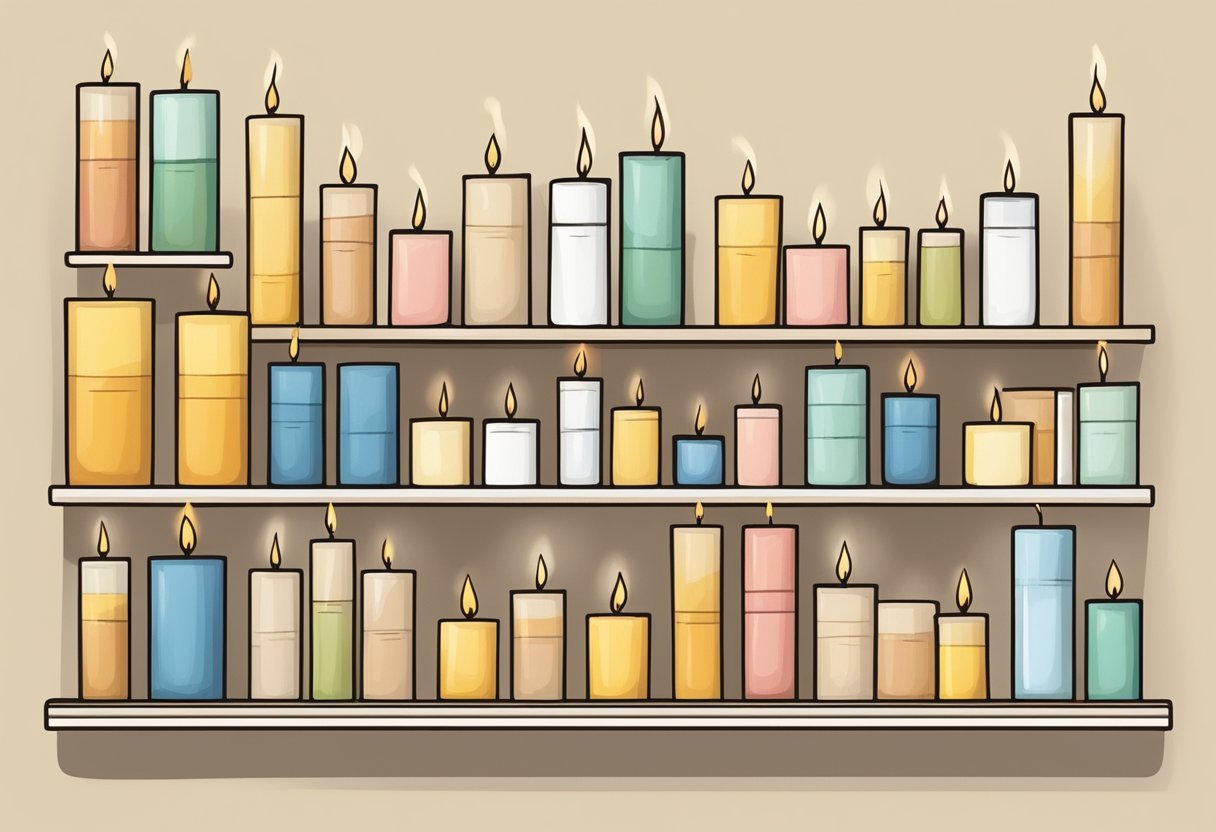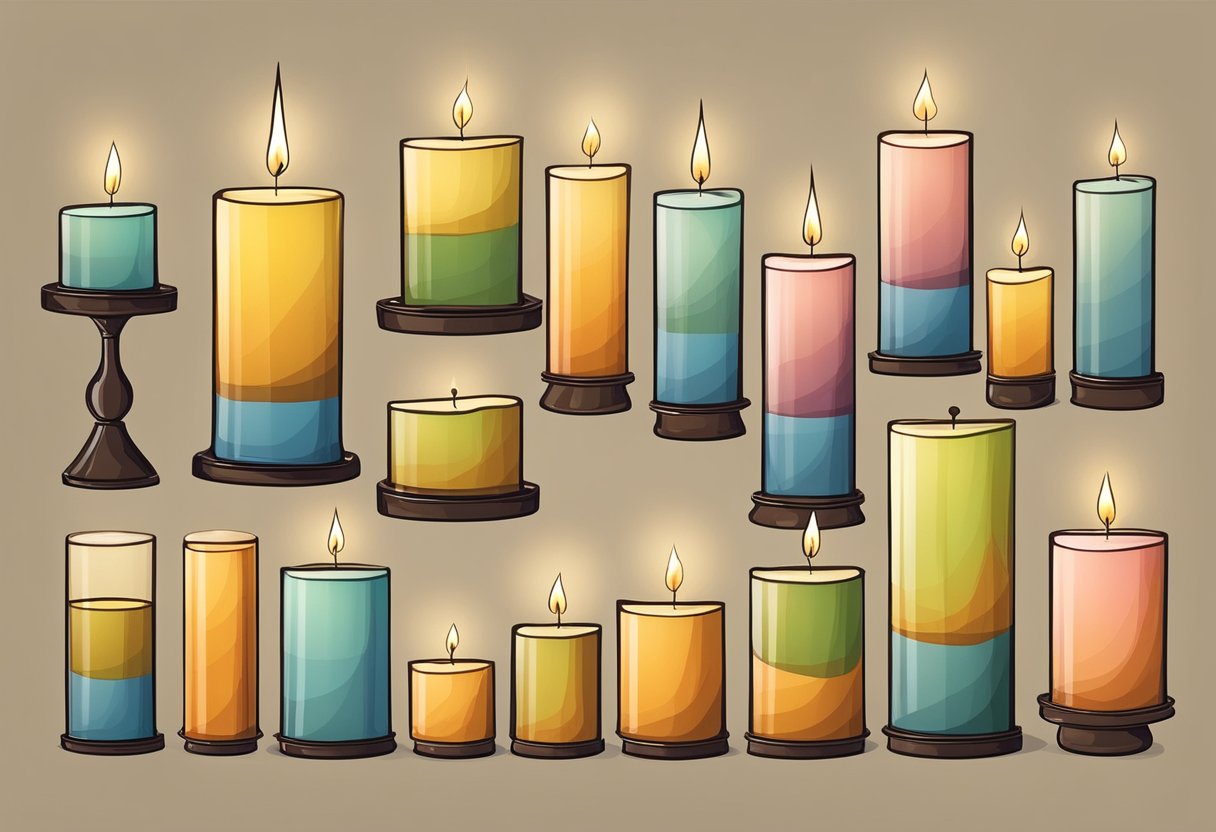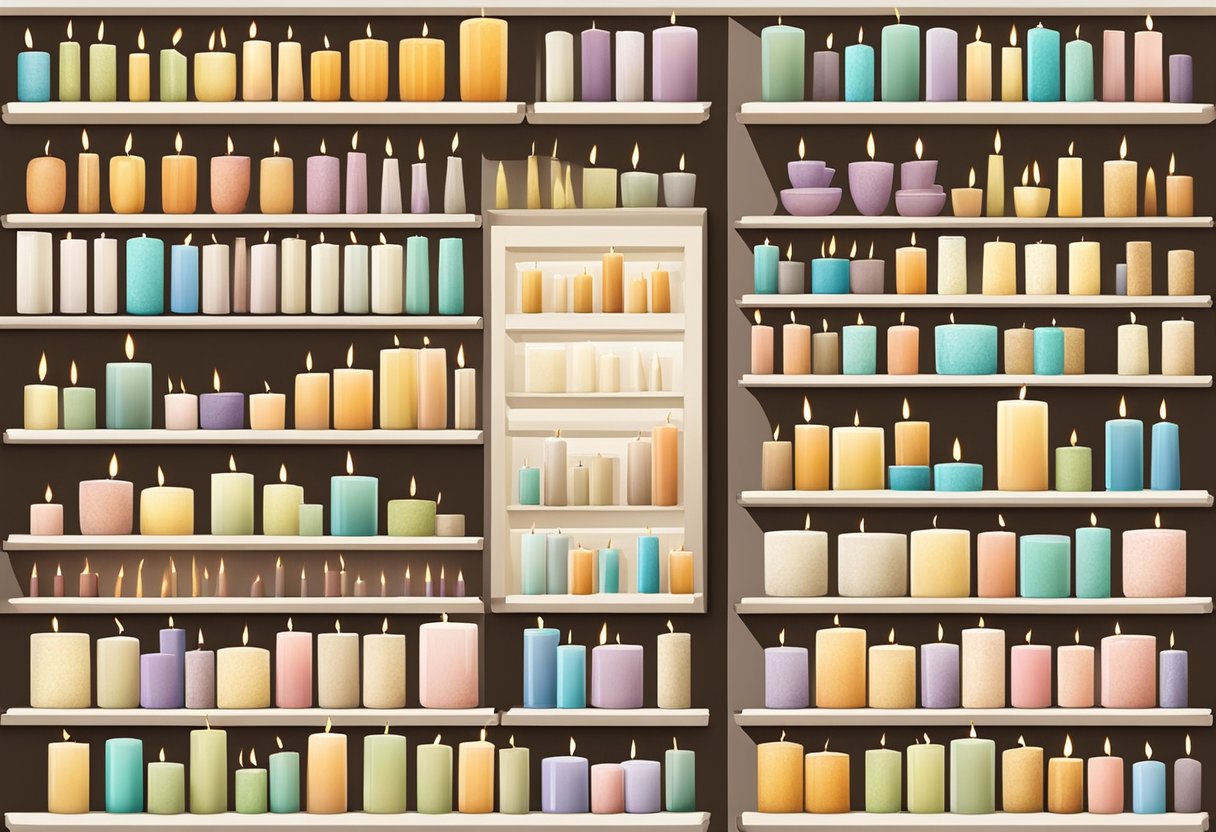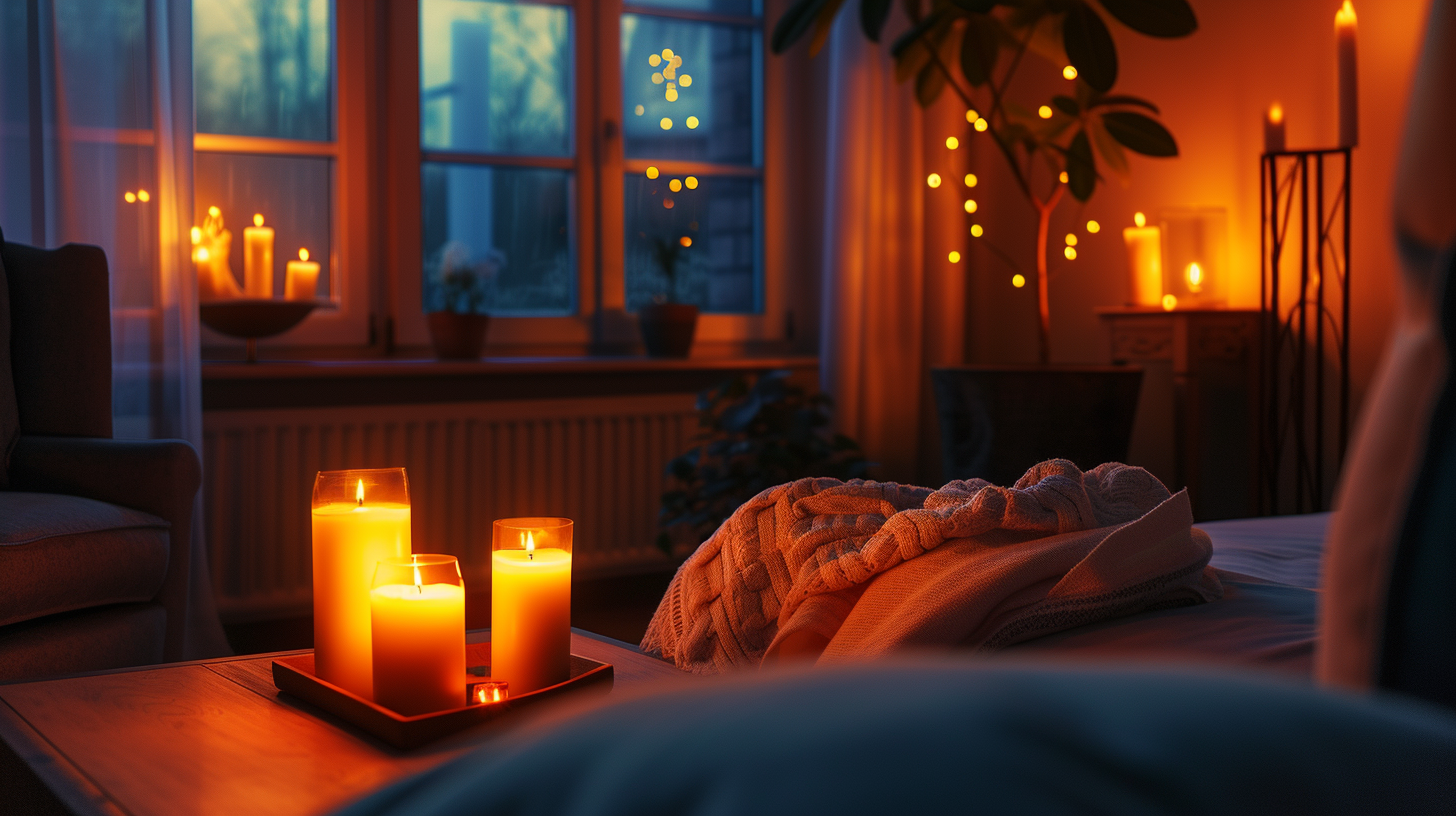Different Types of Candles and How to Choose the Right One: A Comprehensive Guide

Candles are a simple yet effective way to enhance any setting. From adding a touch of elegance to a dinner party to creating a calming atmosphere for relaxation, the right candle can make all the difference. Choosing the perfect candle begins with understanding the various types available and their unique uses. Whether it's a cozy evening at home or a special celebration, selecting the right candle can set the mood and elevate the ambiance.
There are many types of candles to choose from, each offering its own aesthetic and functional benefits. Taper candles, for instance, are long and slim, ideal for formal occasions and dining tables. Pillar candles, with their sturdy and thick form, are perfect for long-lasting decorative displays. Meanwhile, tealights and votives are small but mighty, suitable for accent lighting or outdoor events. Container candles, often scented, provide a safe and easy way to add a warm glow to any room without needing an additional holder.
Understanding the specifics of each candle type allows you to make informed choices. Beeswax candles burn cleanly and last a long time, making them a great eco-friendly option. Soy candles, on the other hand, are known for their smooth and even burn, releasing less soot compared to traditional paraffin wax. Whether you prefer the natural fragrance of lavender or the festive sparkle of a wood wick, there's a candle out there to meet your personal preferences and environmental values.
Understanding Candle Materials
When choosing candles, the two main aspects to consider are the type of wax and the type of wick. These factors affect the candle's burn time, scent throw, and overall performance.
Natural vs. Synthetic Waxes
Candles can be made from different types of wax, each with unique characteristics. Natural waxes, like soy wax and beeswax, are popular for a few reasons. Soy wax, made from soybean oil, burns cleaner and is more eco-friendly. It also holds scent well, making it a great choice for scented candles. Beeswax is another natural option; it is known for its slow burn and subtle honey scent. Both types of natural waxes are sustainable and renewable.
On the other hand, paraffin wax is a synthetic option derived from petroleum. While it is cheaper and widely available, it does not burn as cleanly as natural waxes. Paraffin can release soot and other chemicals into the air, which might concern some users. However, it is excellent for colorful and highly scented candles due to its ability to hold dyes and fragrances well.
Wick Types and Impact on Burn Time
The type of wick used in a candle significantly affects its performance. Cotton wicks are the traditional choice and come in various shapes, such as flat or braided. They offer a steady burn but might require trimming to avoid excessive smoke or soot.
Paper core wicks consist of a cotton outer braid with a paper core. They provide robust support, making them ideal for larger candles that need extra stability. These wicks tend to burn hotter, which may enhance fragrance throw but could lead to faster burning times.
Wood wicks are a modern option known for their unique crackling sound. They are generally wider, offering a long and even burn. Wood wicks also create a more distinctive ambiance, adding another sensory dimension to candle burning.
Each wick type has its strengths and limitations, and the best one to choose depends on what you prioritize in a candle, whether it’s an even burn, a soothing crackle, or a clean flame.
Assessing Candle Types

There are many types of candles to choose from, such as pillar candles, container candles, and specialty candles like floating or flameless candles. Each type has unique features and best uses, making them suitable for different settings and purposes.
Pillar Candles
Pillar candles are thick, solid candles that can stand on their own, without needing a holder. They often come in various sizes and shapes, making them versatile for different occasions.
A key benefit is their long burn time. Small pillar candles can last up to 20 hours, while larger ones may burn for 90 hours or more. This makes them cost-effective for extended use.
Pros:
- Durability: Sturdy and solid, can be used alone.
- Long-lasting: Extended burn times.
Cons:
- Weight: Can be heavy, making them less portable.
- Expense: Usually cost more than thinner candles.
Container and Votive Candles
Container candles are poured into glass or metal containers that can safely withstand heat. Votive candles are smaller, often placed in holders. These candles are easy to manage and generally safer, as the container or holder catches the melted wax.
Container Candles:
- Often scented and used for ambience or aromatherapy.
- Easy to use and less messy, as wax stays in the container.
Votive Candles:
- Perfect for small spaces.
- Can be placed in decorative holders to match any décor.
Pros:
- Safety: Container prevents wax drips.
- Variety: Available in many scents and styles.
Cons:
- Size: Smaller ones have a shorter burn time.
- Heat: The container can become hot, so handle with care.
Specialty Candles
Specialty candles include a wide range, from flameless to floating and novelty types, each offering unique features.
Flameless Candles:
- Battery-operated, good for safety.
- Ideal for homes with kids or pets.
Floating Candles:
- Used in water for decorative displays.
- Great for parties or special events.
Novelty and Birthday Candles:
- Fun shapes and themes, perfect for celebrations.
- Often come in bright colors and designs.
Pros:
- Unique: Adds a special touch to events.
- Versatile: Different types for different uses.
Cons:
- Specific Use: Not as versatile for general candle needs.
- Cost: Specialty designs can be more expensive.
Each type of candle offers its unique benefits and challenges, suited for various needs and occasions.
Scent Selection and Aromatherapy

Understanding how to choose scents and how they influence moods is key for selecting the ideal aromatherapy candle. With the right blend of fragrances, candles can become powerful tools for relaxation, stress relief, or energy boosts.
The Role of Fragrance in Candles
Fragrance is one of the main attractions of candles. A good scent can create an inviting or relaxing atmosphere at home.
Essential oils: These are vital in aromatherapy candles. Lavender is known for its calming effects, while chamomile can help enhance relaxation.
Scented candles: Different scents can influence your mood in various ways. For example, citrus scents like lemon or orange can invigorate and uplift, while floral scents such as rose provide a soothing ambiance.
Fragrance quality is crucial in a candle. Higher-quality oils ensure a steady release of scent throughout the candle's burn time, enhancing the overall experience.
Choosing the Right Scent for the Occasion
Picking the right scent depends on the desired effect and occasion.
For relaxation, lavender or chamomile candles are excellent choices. Their calming properties can help unwind after a long day.
When aiming to energize, consider citrus scents. Lemongrass, orange, or grapefruit can invigorate and refresh the atmosphere.
For better sleep, try vanilla or lavender. These scents promote a peaceful and calm environment, which is perfect before bedtime.
Lastly, during a gathering or dinner party, opt for soft, floral scents like jasmine or gardenia. These provide a welcoming and pleasant backdrop without overpowering the senses.
Choosing the right scent can transform any space, making it more suited to your needs and preferences.
Candle Shapes and Sizes

Understanding the various candle shapes and sizes helps in choosing the right one for your needs. This includes knowing how shape and size affect burn time, usage, and the best fit for different spaces.
Impact on Burn Time and Usage
Different candle shapes have distinct impacts on burn time and usage. Pillar candles are thick and standalone, allowing them to burn for a long time without needing a holder. They are ideal for long-term use in larger spaces.
Taper candles are thin and tall, often used in candelabras. They burn relatively quickly compared to pillars. They are perfect for creating an elegant atmosphere during meals or special occasions.
Tealights are small, disc-shaped candles usually housed in metal or plastic cups. They burn for a short period and are great for accent lighting or in smaller holders. Votive candles are also small but require holders as they melt completely while burning, providing a steady light for several hours.
Choosing the Correct Size for Your Space
When selecting a candle, the size should match the intended space. Large pillars are suitable for spacious rooms where a longer burn time is needed. They also serve as decorative pieces due to their size and aesthetic appeal.
Tapers fit well in dining areas or as part of a decorative arrangement. Their slender shape allows for multiple candles to be used together without taking up much space.
Tealights are versatile and ideal for small areas or for creating a cozy ambiance. Due to their compact size, they can be used in groups without overcrowding.
Votives are best used in medium-sized spaces and require appropriate holders to ensure safety and effectiveness. Their small size allows for flexibility in placement, whether on shelves, tables, or countertops.
The Importance of Color and Design

Choosing the right candle involves more than just picking a scent. The color and design of a candle play key roles in both the ambiance and decor of a space.
Color Psychology and Mood
Colors have a significant impact on mood and can change the feel of a room. White candles symbolize purity and can create a calming environment. Red candles are often associated with energy and passion, making them ideal for dining areas or romantic settings. Yellow candles can lift spirits and bring warmth, suitable for living rooms. Blue candles promote tranquility and are great for bedrooms or bathrooms. Each color can influence how one feels when they enter a room.
Incorporating Candles into Home Decor
Candles can be a versatile decorative element. They can serve as centerpieces on dining tables or add a soft glow to a coffee table. Use candles to match the theme of a room: rustic, modern, or traditional. Choose elegant designs, like pillar candles, for a touch of sophistication, or opt for unique shapes to act as conversational pieces. Candles can blend into the background or stand out as a main decor item, depending on your choice of color and style.
Candles for Occasions and Celebrations
Candles are an essential part of many celebrations. They can add a special touch to birthdays, holidays, and other festivities through different types and designs. Choosing the right candles can enhance the atmosphere and meaning of the event.
Celebratory Candles
Celebratory candles are widely used for special events like birthdays and anniversaries. Birthday candles are small and colorful, often appearing on cakes. They usually come in packs and can be either plain or shaped like numbers.
Floating candles are popular for creating a romantic or enchanting setting. These candles float on water, making them perfect for pool parties or weddings. Another variety is the sparkler candle which, when lit, emits sparkling flames, adding a festive and fun element to the celebration.
For intimate dinners, taper candles provide elegance and charm. They come in various sizes and usually require a holder. A beautiful table setup can be enhanced with these candles to create a warm, inviting glow.
Seasonal and Theme Candles
Seasonal and theme candles are designed to reflect specific times of the year or holidays. During festive seasons, scented candles with fragrances like pine, cinnamon, or pumpkin can evoke the feeling of the season. Christmas candles often come in red, green, and gold colors, adding a festive touch to decorations.
For Halloween, themed candles like jack-o'-lantern shapes or spooky designs can enhance the haunted atmosphere. Valentine's Day might feature heart-shaped candles or those in romantic colors like red and pink. These thematic touches make celebrations more memorable and special.
Festive candles also play a role in religious holidays. For instance, Hanukkah candles are used in a menorah, while Diwali candles light up homes during the festival of lights. These candles are not only decorative but hold cultural and spiritual significance as well.
Candle Safety and Maintenance
Ensuring candle safety and maintaining them properly are essential to enjoy their benefits fully. Practicing safe candle usage and taking steps to extend the life and performance of your candles are simple but vital tasks.
Safe Practices for Candle Usage
To prevent accidents, always follow these safe candle practices:
- Never leave a burning candle unattended. This reduces the risk of fire.
- Keep candles away from flammable objects like curtains, bedding, and paper.
- Place candles on a stable, heat-resistant surface to avoid tipping and heat damage.
- Trim the wick to about 1/4 inch before each burn to maintain a steady flame. This helps avoid excessive smoke.
- Keep candles out of reach of children and pets to prevent accidents.
- Use a candle snuffer to extinguish the flame safely. Blowing it out can cause hot wax to splash.
- Avoid burning candles all the way down. Leave at least 1/2 inch of wax in pillars or containers.
Following these practices ensures that your candle usage remains safe and enjoyable.
Extending Candle Life and Performance
Proper maintenance can extend your candle’s burn time and improve its performance:
- Burn candles long enough to create a full melt pool. This prevents tunneling and ensures an even burn.
- Store candles properly: A cool, dry place away from direct sunlight prevents discoloration and melting.
- Rotate candles regularly to allow even burning and avoid one-sided melting.
- Use the right wick trimmer: Wicks should be trimmed to about 1/4 inch to ensure a clean, even flame.
- Monitor liquid wax: Ensure it doesn't extinguish the flame by overflowing the container.
- Consider flameless candles for settings where traditional open flames are impractical or dangerous. They offer versatility and safety.
By following these steps, your candles can last longer and provide a better experience.
Eco-Friendly and Sustainable Options
Eco-friendly and sustainable candles are great for reducing your environmental impact. These candles often use natural materials and avoid harmful chemicals, providing a cleaner and safer burn.
Benefits of Eco-Friendly Choices
Eco-friendly candles are typically made from natural materials like soy, beeswax, palm wax, and bayberry wax. Soy candles burn cleaner and longer than traditional paraffin. They produce less soot, making indoor air quality better.
Beeswax candles are another clean-burning option. They emit negative ions that may help purify the air, reducing pollutants. There are also palm wax and bayberry wax options, both derived from renewable resources.
Many eco-friendly choices avoid synthetic fragrances, using essential oils instead. This makes them ideal for those with allergies or sensitivities. They are often packaged in sustainable materials like recycled or reusable containers, reducing waste.
Identifying Sustainable Candle Resources
When choosing sustainable candles, look for those made with 100% natural waxes like soy, beeswax, palm, or bayberry. Check for certifications indicating cruelty-free, phthalate-free, and environmentally friendly practices.
Consider companies that prioritize sustainable production methods, such as using local or responsibly sourced ingredients. Artisanal brands often hand-pour their candles and use minimal, eco-friendly packaging.
Subscription services offering sustainable candles can be convenient. For example, some services let you select specific types of eco-friendly candles and have them delivered regularly. Brands like P.F. Candles and Hyggelight are noted for their sustainable practices and high-quality products.
Always read labels and research brands to ensure they align with your environmental values.




